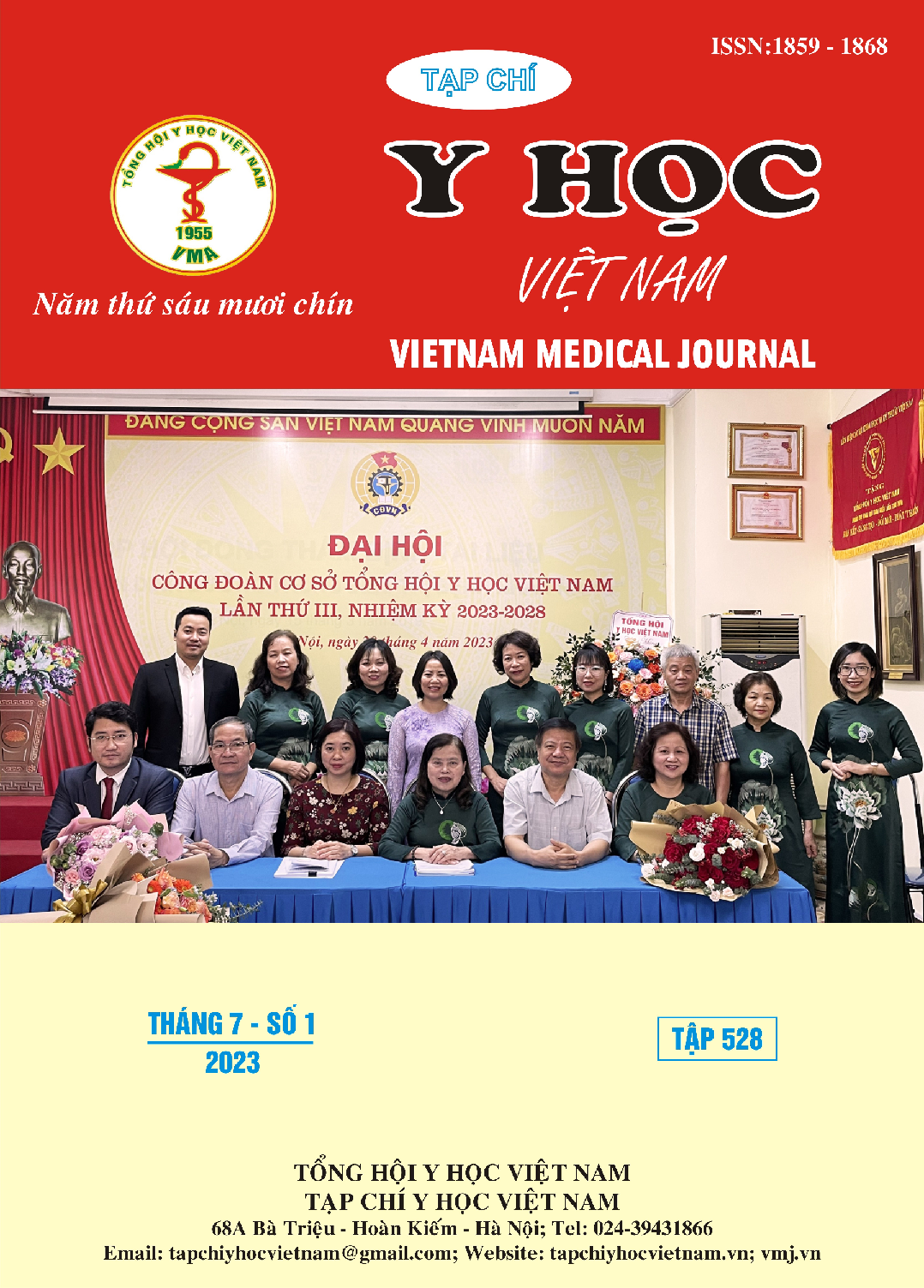EFFECTIVE PRETERM LABOR TREATMENT WITH ATOSIBAN AT NAMDINH OBSTETRICS AND GYNECOLOGY HOSPITAL
Main Article Content
Abstract
Objectives: To describe the characteristics and results of preterm labor treatment with Atosiban of pregnant women at Nam Dinh Obstetrics and Gynecology Hospital. Research subjects: all medical records of preterm labor treatment with Atosiban from January 2020 to June 2022. Results: There are 30 pregnant women who satisfy the selection criteria, of which 73.3% are singleton pregnancies; Singleton pregnancies are mostly spontaneous pregnancies. Twins accounted for 26.7%, of which 75% assisted reproduction. Treatment results: 56.7% successful treatment (maintain pregnant >48 hours). There is a relationship between the gestational age at the start of treatment and the outcome of pregnancy maintenance due to p=0.043 < 0.05. For pregnant women with uterine contractions frequency 3, there is no case that keeps the pregnancy for 7-14 days. There is a relationship between the frequency of CCTC with the treatment outcome (p<0.05). Conclusion: There were both singleton and twin pregnancies involved in the study. Single pregnancy is mainly natural pregnancy; Twin pregnancies are largely the result of assisted reproduction. 56.7% of pregnant women successfully maintain the pregnancy. There is a relationship between the gestational age of starting treatment, the frequency of uterine contraction and the outcome of pregnancy maintenance.
Article Details
Keywords
: Preterm labor, Atosiban
References
2. Lawn JE, Mwansa-Kambafwile J, Horta BL, Barros FC, Cousens S. (2010). Kangaroo mother care to prevent neonatal deaths due to preterm birth complications. Int J Epidemiol; 39 Suppl 1:i 144 – 54.
3. Howson CP, Kinney MV, Lawn JE. (2012). Born too soon: the global action report on preterm birth. Geneva, March of Dimes, The partnership for Maternal, Newborn and Child Health (PMNCH), Save the children, WHO.
4. Husslein P, Roura L, Dudenhausen J et al. Clinical practice evaluation of atosiban in preterm labour management in six European countries. BJOG,2006. 113(3): p105-110.
5. Van Vliet EOG, Nijman TAJ, Schuit E et al. Nifedipine versus atosiban for threatened preterm birth (APOTEL III): a multicenter, randomized controlled trial. Lancet. 2016(10033): 2117-2124.
6. Phạm Minh Giang (2020). Hiệu quả điều trị dọa đẻ non bằng Atosiban tại Bệnh viện Phụ sản trung ương, Luận văn Thạc sỹ y học, trường Đại học y Hà Nội.
7. Nguyễn Thúy Hà (2008). Nghiên cứu tác dụng của Nifedipine trong điều trị dọa đẻ non tại Bệnh viện Phụ sản trung ương trong 5 năm (2004-2008) , Luận văn Thạc sỹ y học, trường Đại học y Hà Nội.


